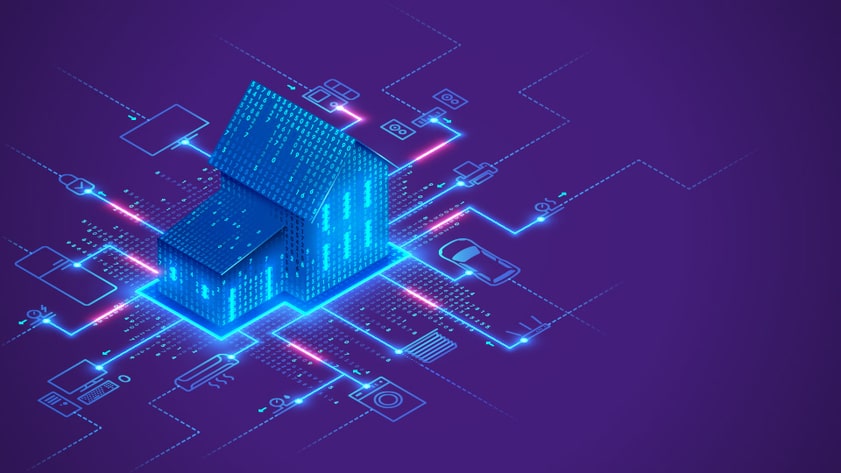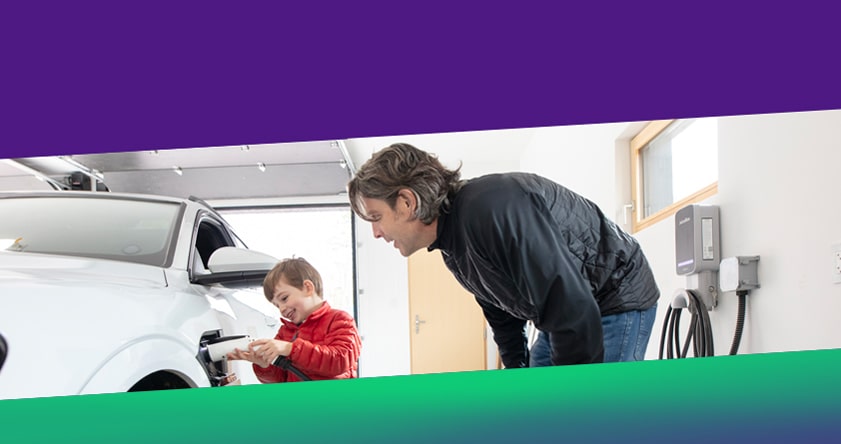How to Make Your House a Smart Home

Nearly every facet of a modern home can be controlled with smart technology. Thanks to digital communications, we can use mobile apps on a connected device to effortlessly manage lights, locks, cameras, thermostats, appliances, and security systems. The list of benefits for advanced home automation includes greater convenience, enhanced security, and big energy savings. Besides, smart home technology is just cool.
Setting a comfortable temperature from an app? That’s nothing compared to what smart homes now offer. The technology is helping society transition to renewable energy to power our homes and our cars. If you have been searching for ways on how to make a smart home using the latest technology, you came to the right place.
The First Chapter of the Smart Home Revolution
It’s been nearly a decade since smart thermostats were introduced. It was remarkable the first time we nudged up the temperature a few degrees without getting off the couch. The intelligence built into the smart device was even more impressive. After a couple of weeks of turning the heat up or down, a smart thermostat learns your daily habits. Before long, the appliance knows the optimal temperature at each hour of the week—adjusting for when you are away. In the process, we saved money by not using heat and AC when it wasn’t needed.
At first, smart thermostats cost a bit more than traditional versions. But they delivered a return of investment based on energy savings. Today, most consumers couldn’t imagine installing a so-called dumb thermostat without mobile-app control and learning algorithms. A similar revolution has occurred with wireless home security systems, many of which can be installed DIY. These systems turn a smartphone into a house’s command center. Fire up the app to get a live feed from smart home security cameras, whether you’re inside the house or halfway around the world. When a guest rings the doorbell, you get a smartphone notification. Tap it to open a video chat with your visitor. Another tap unlocks the door to let them in.
Again, the marvel of a smart home system is not simply the ability to remotely open doors or turn on lights with the tap of a smart switch. It’s the creation of a centralized platform for scheduling when lights come on, sprinklers water the lawn, or a burglar alarm is activated. That platform—a personal network of web-enabled devices—keeps a record of these activities so you can see when kids come from school or a garage door is left open.
Smart Home and Smart Grid
A smart home becomes turbocharged when it’s connected to external systems. For example, a home security system is remotely monitored by an alarm company. If there’s an unwanted intruder, the company (if permitted) can listen or see what’s happening in the home. That capability allows security monitors to dispatch police or firefighters with speed and confidence. It’s a potential life-saver.
Let’s go one step further. It’s predicted that utility companies will become the number one users of the so-called Internet-of-Things infrastructure. A Smart Meter (also accessible via mobile apps) allows a utility to provide customers with detailed information about energy usage at different times of the day. A consumer can use this data to manage lower time-of-use electricity rates. In turn, the utility can know when there’s an outage and quickly restore service.
Many of these activities benefit from geolocation services by enabling a connected device. For example, the smart home system knows when you (or even your car) are approaching your home. The garage door opens automatically. The thermostat is adjusted, and lights turn on. Savvy home automation enthusiasts go further by transferring a music playlist from a car’s speakers to the home audio system.
Connecting Cars, Homes, and Energy
Keeping the jams flowing from car to home is a nice-to-have. But communications between vehicles, homes, utilities, and other smart products play a more meaningful role: It helps fight climate change.
Keep in mind that electric cars are expected to take over the automotive market in the coming decades. In San Jose, Calif., located in the heart of Silicon Valley, EV adoption is already at about 20 percent of auto sales. In 2020, nearly half of Norway’s car sales are purely electric.
For these owners, an electric car essentially becomes the home’s largest electric device, among all other smart appliances. State-of-the-art home charging stations, like Enel X’s flagship product, the JuiceBox is a smart charger. Why would homeowners use smart switch web technologies to control and manage lights, locks, cameras, and music but not control a residence’s largest appliance?
An EV commonly only needs to charge for a couple of hours a night to recharge fully. So Enel X works with utilities and smart home gadgets to manage thousands of electric vehicle chargers—thereby reducing peaks in energy demand. That helps utilities and grid operators reduce infrastructure investments while utilizing renewable energy (like wind and solar) when it’s most abundant.
With the help of smart home technology, every consumer can play a role in fighting climate change. That wasn’t possible before smart homes, smart meters, and highly connected electric vehicles.
Buy Renewable Energy Certificates (RECs) With or Without a Smart Charger
Enel X’s new JuiceEco matches an electric car’s electricity consumption with Green-e Certified Renewable Energy Certificates (RECs). For $30 a year, a driver with a JuiceBox EV charger can buy enough 100-percent renewable energy for 10,000 miles of driving in a zero-emission vehicle.
Of course, an EV doesn’t have a tailpipe, so there are no local emissions. But with a JuiceEco plug, the EV owner can reduce his or her carbon footprint, no matter where the person lives and where the person charges. In that sense, the benefits of a smart home with an intelligent charger go way beyond the house’s property line. It’s all about a global alignment of your electric devices and the world’s energy production. And it happens seamlessly through a smart home app.
For example, if you’re an EV driver, just plug in your car when you arrive home. Then, when it makes the most sense—likely in the wee hours while you’re sleeping—the smart charger will start the flow of electricity to your car. The next morning, wake up in your smart home with the thermostat set to the most desirable temperature. The security system is disarmed automatically. And a smartphone app shows how many kilowatt-hours of energy went into your car’s battery.



